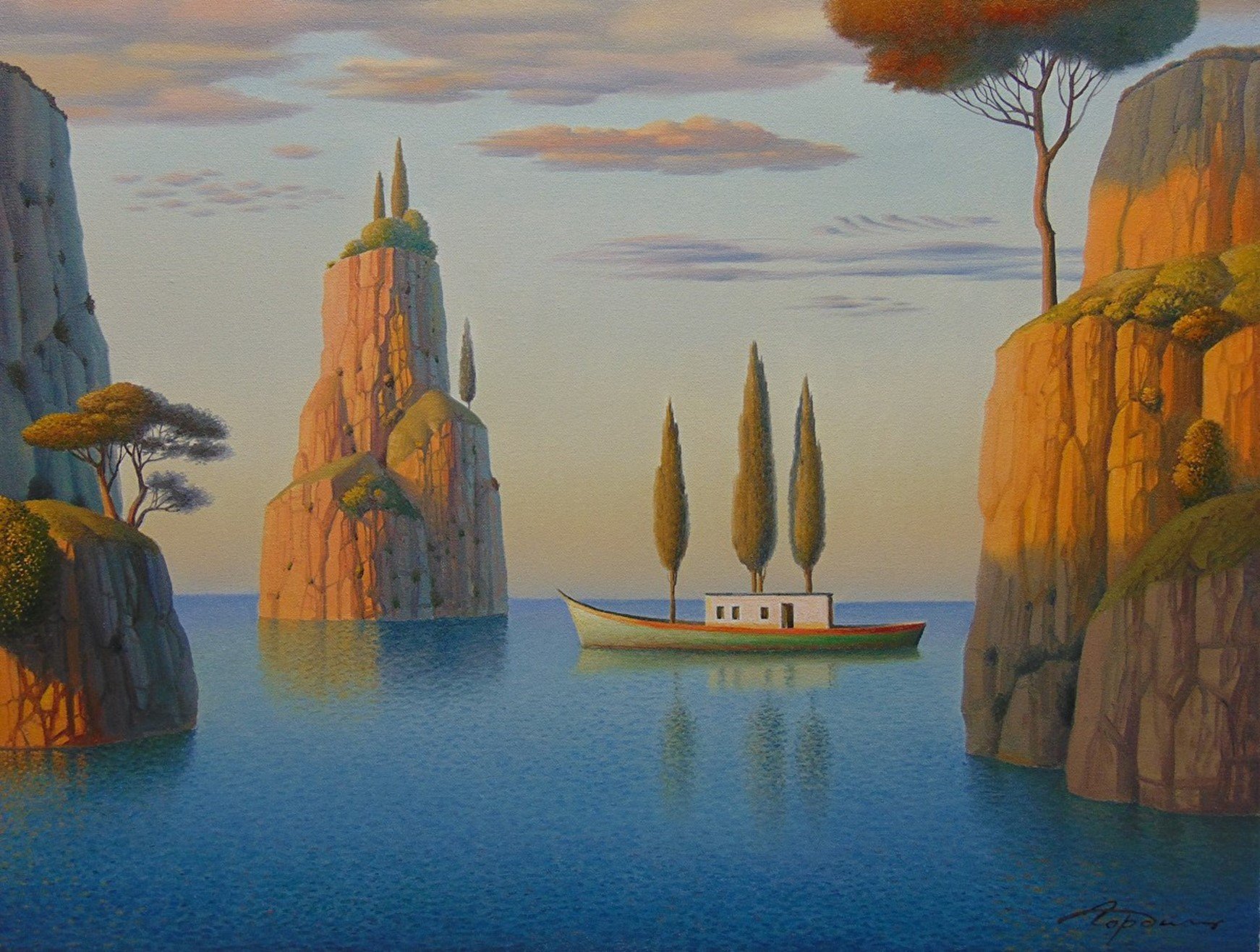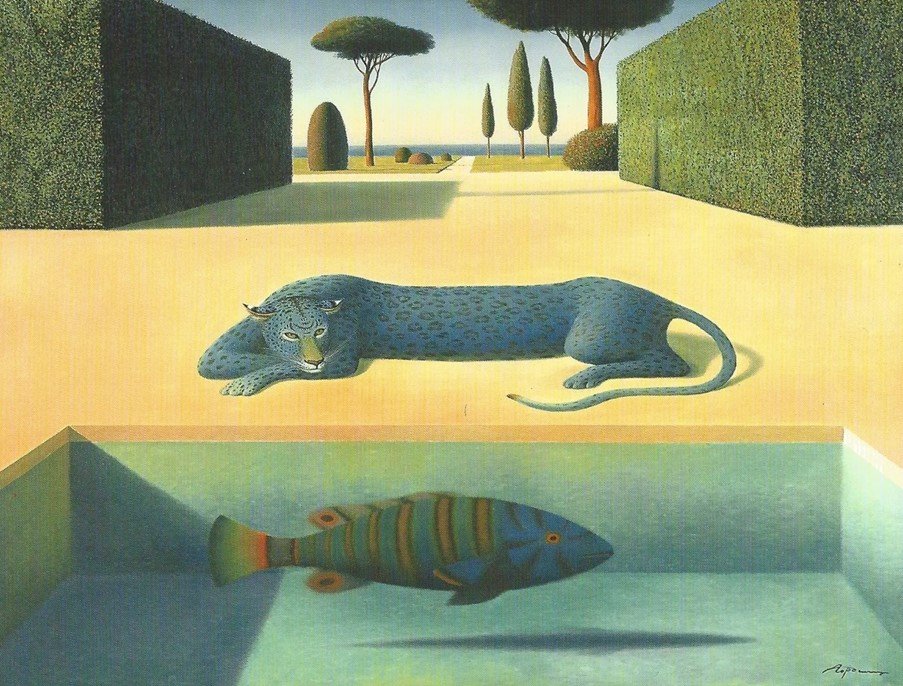Serene Surrealism: Quiet magic in the work of Evgeni Gordiets
BY GRACE ROBERTS
Scouted at the ripe age of five, Evgeni Gordiets is a contemporary surrealist painter whose body of work is a dreamlike exploration of surrealist landscape and the subdued fantastic. Born in Ukraine and deemed a child prodigy, Gordiets received formal training at the National School of Fine Arts, State University of Fine Arts, and the State Academy of Fine Art, all of which are located in Kiev. Going on to fulfill a role as Professor of Art at the National Art University of the Ukraine, he has been the recipient of numerous accolades and prizes for his life’s work. Often slotted into the subcategories of “sunny” or “serene” surrealism, Gordiet’s color work and peaceful landscapes lull audiences at the same time it reminds them to look for the quiet magic.
The initial draw to Gordiets’ paintings was, for me, the trees. Perfectly manicured Italian cypress trees stand sentry-like in foregrounds and stone pines crop up around villas, and a hedgerow makes its way into at least two paintings. The dotting of topiaries and spherical scrub brush adds a depth and detail to the landscape without complicating it — Gordiets values sparsity without sacrificing beauty. He often uses the pointillism technique, which is painting by layering thousands of tiny dots in order to create a soft, hazy quality, as if the viewer were looking at the scene through the refraction caused by an almost imperceptible mist. As he primarily paints landscapes, his inclusion of tree variety adds a lushness and certain grounding to his pieces, simultaneously elevating and grounding his work.
Destination
Perhaps one of my most favorite pieces by the artist is Blue Leopard with Fish. Looking first to the framing of the painting, the environment established in the background is clean and measured — two hedges which appear to be trimmed using a ruler and a pair of embroidery scissors draw the viewer back into a garden peppered with topiary and cypress trees. A leopard lazily watches a fish in a small pool, their colors deep shades of greenish-blue and muted yellows, dead-center in the middle of the painting’s botanic framing. There is no urgency portrayed in the leopard; the audience does not get the impression he is prepared to pounce or swipe at the fish, who is suspended in the water. This has the effect of evoking a sense of anticipatory peace, a potential for action, but ultimately shakes out to be almost languid in its presentation of predator and prey. This is the case with much of Gordiets’ style — questions arise and are quietly laid to bed because there is a pervading sense of utter serenity.
Blue Leopard with Fish
Many of Gordiets’ paintings are imbued with a sense of subtle unreality, both from his grasp of color to his literal incorporation of fantasy. Womens’ profiles appear in rock faces, their stony bodies supporting a cliffside home or forming an entire island. These Mother Natures are Renaissance-like in their hair and features, appearing to have simply risen from the ground as opposed to having been carved, forming the coastlines upon which nature has evolved around them. Gordiets essentially blends elements of Surrealism and Impressionism in a way reminiscent of iconic artists like Dali and Magritte, perhaps with a little Monet thrown in. But whereas these painters were often operating with the intention to stun or surprise with their depiction of unconventional settings, Gordiets does not appear to have the same agenda.
Much of his association with classic surrealist painters largely stems from the environment of his paintings, which feel set in a far-away land somewhere off the Italian coast, his nontraditional subjects may also contribute to his inspirations. Ingredients from traditional still life paintings find themselves in unconventional locations — a life-size apple on a lawn, a shell the size of a tree — calling back to a classicism which Gordiets has subverted for the modern era. His paintings feel familiar but never expected, an effect heightened by his use of deep, muted colors on locations audiences feel they may have seen in a storybook.
Bay of Silence
Contemporary surrealism is a largely undefined genre, with styles ranging from the early 2000’s global coffeehouse of cubist-surrealist iterations to the Southwest-inspired art which favored muted yet preternatural palettes. Gordiets combines these influences in a way that feels modern but manages to evoke the traditions of his predecessors in both content and style, effectively establishing a balance that gives his work a timeless quality. Beyond the general understanding that his paintings are surrealist in style, one is hard-pressed to locate his paintings in reality, which is quite magical and a breath of fresh air in the world of landscape painting.
ST.ART Magazine does not own the rights to any image used in this article



